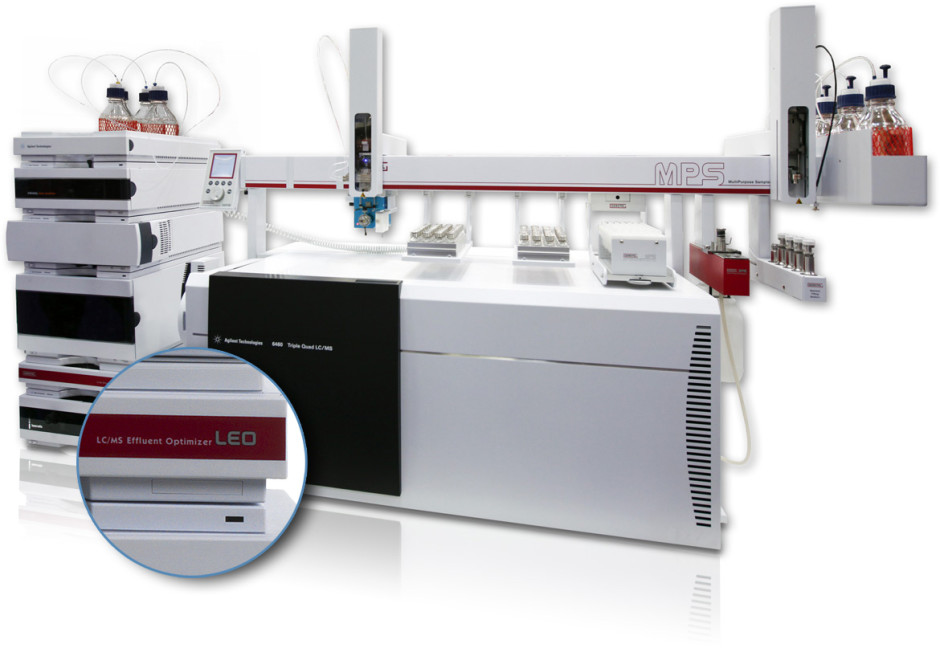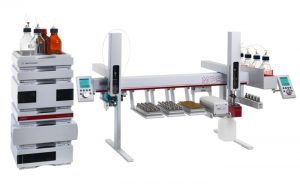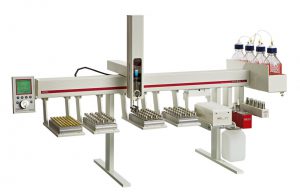MultiPurpose Sampler for LC/LCMS
Improve your LC/MS productivity while ensuring best accuracy and reliability.
The GERSTEL MultiPurpose Sampler MPS is a highly productive LC autosampler and sample preparation robot for up to 3456 samples. In combination with the GERSTEL MAESTRO Software, the MPS provides more performance and higher productivity in sample preparation than any other commercially available LC/MS or LC autosampler. The MPS is compatible with all standard LC Systems.
Modular design, easy for upgrade
The MPS autosampler for LC and is easily adapted to new tasks and processes in the laboratory. Exchangeable syringe modules enable fast change of methods even between different analytical techniques, such as liquid sample handling and sample introduction.
A number of sample preparation techniques for LC are available:
- Solid Phase Extraction (SPE)
- Disposable Pipette Extraction (DPX)
- Liquid Handling
- Standard addition
- Derivatization
- Dilution
- Extraction
- Heating, cooling and/or mixing
- Parallel evaporation and concentration (mVAP)
- Reading and processing of barcodes
- Centrifugation and weighing
- Membrane Assisted Solvent Extraction (MASE)
- Twister Back Extraction (TBE)
Heated or cooled sample trays
MPS sample trays and sample stacks for Deepwell or Microtiter plates can be optionally heated or cooled in order to stabilize or condition samples. Trays and stacks are available with Peltier cooling or cryostatic cooling covering a temperature range from 4 to 70 °C. In order to control sample preparation reactions, for example, when a derivatization step is used, the MPS agitator/orbital shaker is also available with Peltier Cooling. The agitator can be operated at temperatures between 10 and 200 °C.
Minimize carry over – maximize productivity
- Two solvent wash stations: Minimal carry over
- Sampling needle rinsed on both the inside and outside to minimize carry-over
- Active wash station rinses injection valve and syringe simultaneously, reducing both carry-over and cycle time
- The innovative Dynamic Load and Wash (DLW) technology helps eliminate carryover while providing fast wash cycles
- Capable of sampling from any format:
3456 samples in 36 Microwell plates
1728 samples in 18 Deepwell plates
972 x 2 mL Vials
600 x 1 mL Vials
96 x 10/20 mL Vials
Autosampler and fraction collector
In addition to its capabilities in sample preparation and sample introduction the MPS can be used as a fraction collector. Further LC or GC analysis of collected fractions can easily be performed in a fully automated manner. If different syringes are required for fraction collection and sample introduction, the MPS can be upgraded to the dual rail version, capable of performing all steps automatically without changing syringes.
Compact version of the MPS – the bench-space saver
Stretching only 53 cm across, the compact version of the MPS provides best possible use of valuable laboratory bench space. The MPS is a fully featured LC autosampler for sample preparation and sample introduction – with a capacity of up to 648 x 2 ml vials
Product Specifications









